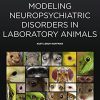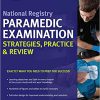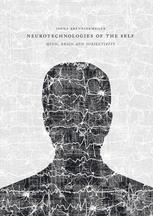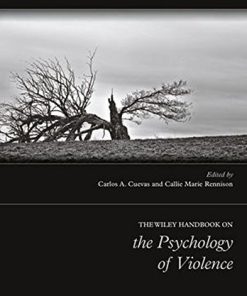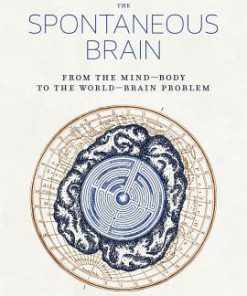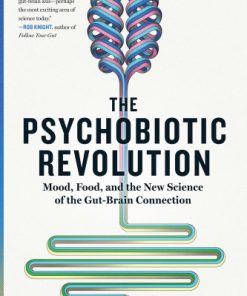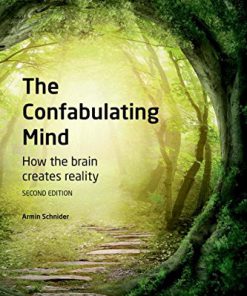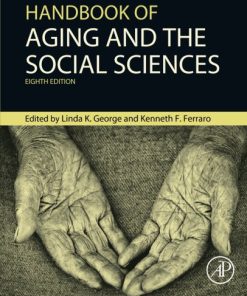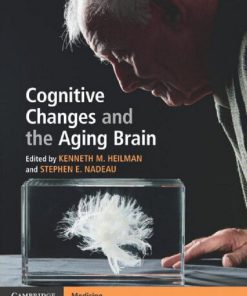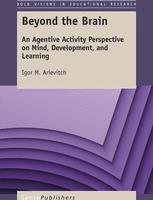The Wiley Handbook on the Aging Mind and Brain 1st Edition by Steven Anderson, Bernd Fritzsch, Matthew Rizzo 1118772089 9781118772089
$50.00 Original price was: $50.00.$25.00Current price is: $25.00.
The Wiley Handbook on the Aging Mind and Brain 1st Edition by Steven Anderson, Bernd Fritzsch, Matthew Rizzo – Ebook PDF Instant Download/DeliveryISBN: 1118772089, 9781118772089
Full download The Wiley Handbook on the Aging Mind and Brain 1st Edition after payment.
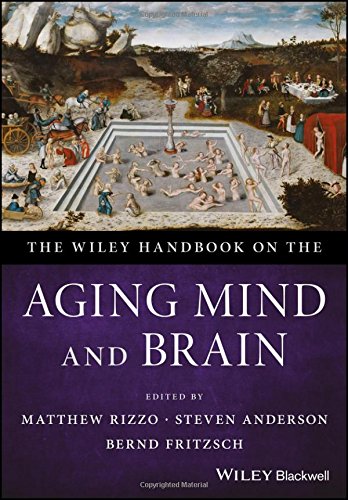
Product details:
ISBN-10 : 1118772089
ISBN-13 : 9781118772089
Author: Steven Anderson, Bernd Fritzsch, Matthew Rizzo
A thought-provoking treatise on understanding and treating the aging mind and brain This handbook recognizes the critical issues surrounding mind and brain health by tackling overarching and pragmatic needs so as to better understand these multifaceted issues. This includes summarizing and synthesizing critical evidence, approaches, and strategies from multidisciplinary research—all of which have advanced our understanding of the neural substrates of attention, perception, memory, language, decision-making, motor behavior, social cognition, emotion, and other mental functions. Written by a plethora of health experts from around the world, The Wiley Handbook on the Aging Mind and Brain offers in-depth contributions in 7 sections: Introduction; Methods of Assessment; Brain Functions and Behavior across the Lifespan; Cognition, Behavior and Disease; Optimizing Brain Function in Health and Disease; Forensics, Competence, Legal, Ethics and Policy Issues; and Conclusion and New Directions. Geared toward improving the recognition, diagnosis, and treatment of many brain-based disorders that occur in older adults and that cause disability and death Seeks to advance the care of patients who have perceptual, cognitive, language, memory, emotional, and many other behavioral symptoms associated with these disorders Addresses principles and practice relevant to challenges posed by the US National Academy of Sciences and National Institute of Aging (NIA) Presents materials at a scientific level that is appropriate for a wide variety of providers The Wiley Handbook on the Aging Mind and Brain is an important text for neurologists, psychiatrists, psychologists, physiatrists, geriatricians, nurses, pharmacists, social workers, and other primary caregivers who care for patients in routine and specialty practices as well as students, interns, residents, and fellows.
The Wiley Handbook on the Aging Mind and Brain 1st Table of contents:
Part I: Introduction
1 The Aging Mind and Brain: Overview
Introduction
Goals of this Handbook
Overview of Contents
Audiences
References
Part II: Theoretical, Animal Models, Social, and Humanistic Perspectives
2 Social Networks, Social Relationships, and Their Effects on the Aging Mind and Brain
“Healthy Aging” as Physical, Mental, and Social Well‐Being
Toward Defining Key Terms and Concepts: Social Networks and Social Relationships
Relationships between Social Networks and Health
Relationships Between Social Networks and the Aging Mind and Brain
Characteristics of Social Networks and Social Relationships among Older Adults
Addressing the Links Between Social Relationships and Cognitive Aging
Social Networks of Families Caring for the Aging Mind and Brain
Concluding Thoughts: Healthy Aging of our Mind and Brain – Where are we Headed?
Acknowledgments
Key Readings
References
3 Aging and the Brain
Introduction
Why do we Age: Evolutionary Theories of Aging
Cellular Mechanisms that Drive Aging
Brain Aging: Is Brain Aging Special and How does it Affect Organismal Aging?
Key Readings
References
4 Animal Models of Pathological Aging
Introduction
Model Organisms
Summary
Key Readings
References
5 Humanistic Perspectives: Arts and the Aging Mind
What Is the Humanistic Perspective?
Literature and Writing
Visual Art
Film
Critical Approaches: The “Neuro” Paradigm
Conclusion
Key Readings
References
Part III: Methods of Assessment
6 Medical Assessment of the Aging Mind and Brain
Introduction
History
The Examination
Making the Diagnosis
Discussion of the Diagnosis with the Patient
Conclusion
Key Readings
References
7 Neuropsychological Assessment of Aging Individuals
Background
Models of Assessment
Domains of Assessment
Training and Credentialing in Neuropsychological Assessment
Neuropsychological Syndromes and the Elderly
Summary
Key Readings
References
8 Normal Aging: Brain Morphologic, Chemical and Physiologic Changes Detected with in vivo MRI
Introduction
Structural MRI
Diffusion‐Weighted MRI
Magnetic Resonance Spectroscopy (MRS)
Functional MRI
Perfusion‐Weighted MRI
Outlook and Future
Key Readings
References
9 Positron Emission Tomography (PET) Imaging: Principles and Potential Role in Understanding Brain Function
Principles of Positron Emission Tomography (PET) Imaging
Clinical/Research Uses of PET
Epilepsy Imaging
Alzheimer’s Disease (AD) and Dementia Imaging
Conclusions
Key Readings
References
10 Electrophysiological Measures of Age‐Related Cognitive Impairment In Humans
Introduction
Review of Oscillatory Neural Activity
Review of Stimulus‐Evoked Neural Activity
Discussion
Key Readings
References
11 The Brain in the Wild: Tracking Human Behavior in Naturalistic Settings
Introduction
Insights from the Clinic and Laboratory
What People do all Day
Classification and Tracking Human Movement and Energy Expenditure
Experience Sampling Method (ESM)
Tool‐Driven Revolution
Inferences on Causality from Real‐World Observations
Perspectives for Following a Person in Context
Locating the Subject
Energy Expenditure
Tracking Physiology
Social Sensors
Telehealth
Video Images in Public and Private Spaces
Commercial Products
Incorporating Digital Data from the Internet and Social Network Tools
Crowd‐Source Reports of Behaviors
Task‐Enabling Technologies
Drinking from a Firehose
Social, Ethical, Legal and Practical Implications
Conclusions and New Directions
Key Readings
References
12 Quality of Life Assessment
A Brief, Selective Introduction to QOL’s Intellectual Roots
Methods and Measurements: Standards and Special Considerations
Selected Generic QOL and HRQOL Measures
Selected Generic Preference or Utility Measures
Selected QOL Measures Specifically for Older Adults
Summary, Conclusion and Outlook
Key Readings
References
Part IV: Brain Functions and Behavior Across the Lifespan
13 Executive Functions and Behavior Across the Lifespan
What are Executive Functions?
Lifespan Changes in Executive Functions
Identifying the Key Aspects of EF in Older Persons
Aging‐Related Diseases and Executive Functions
Assessment and Management of Executive Function Deficits in Aging
Conclusions
Key Readings
References
14 Memory and Language in Aging: How Their Shared Cognitive Processes, Neural Correlates, and Supporting Mechanisms Change with Age
Introduction
Memory and Aging
Language and Aging
Models of Cognitive Aging Applied to Memory and Language
Interactions Between Memory and Language
Conclusion
Acknowledgments
Key Readings
References
15 Vision and Aging
Introduction
Structural Changes in the Eye with Aging
Epidemiology of Vision Impairment and Aging‐related Eye Conditions
Five Common Vision Problems in Older Adults
Visual Impairment from Cerebral Disorders
Effect of Vision Changes on Activities of Daily Life
Key Readings
References
16 Aging‐Related Balance Impairment and Hearing Loss
Introduction
Balance/Gait System
The Vestibular System
The Auditory System
Key Readings
References
17 Attention and Processing Speed
Introduction
Measuring Attention in the Laboratory
Enhancement and Inhibition
Models of aging and attention
Conclusions
Key Readings
References
18 Motor Functions and Mobility
Introduction
Upper Limb Motor Function in Healthy Aging
Age‐Related Changes in Brain Structure and Motor Function
Age‐Related Changes in Brain Neurochemistry and Motor Function
Age‐Related Changes in Brain Function during Motor Tasks
Avoiding Age‐Related Declines in Movement Control
Fine Hand Motor Function
Lower Limb Motor Function in Healthy Aging
Key Readings
References
19 Incontinence and Sexual Dysfunction
Introduction
CNS Substrates of Genitourinary Dysfunction
Urinary Incontinence
Erectile Dysfunction
Fecal Incontinence (FI)
Conclusion
Key Readings
References
20 Emotional Function During Aging
Introduction
The Phenomenon: Emotion During Older Age
Contemporary Models of Aging and Emotion
An Integrated Perspective of Age and Emotion
Conclusion
Acknowledgment
Key Readings
References
Part V: Brain Disease and Dysfunction
21 Alzheimer’s Disease and Mild Cognitive Impairment
Overview
Alzheimer’s Disease
Mild Cognitive Impairment
Treatments
New Diagnostic Criteria
Acknowledgments
Key Readings
References
22 Cerebrovascular Disease and White Matter Disorders
Cerebrovascular Disease
White Matter Disorders
Key Readings
References
23 Movement Disorders
Introduction
Hypokinetic Movement Disorders
Hyperkinetic Disorders
Key Readings
References
24 Psychiatric Disorders
Introduction
Depressive Disorders
Bipolar Affective Disorder
Psychotic Disorders
Key Readings
References
25 Encephalopathy
Definitions
Clinical Manifestations
Endocrine‐Metabolic Encephalopathies
Infectious Encephalopathies
Autoimmune Encephalopathies
Vascular Encephalopathies
Toxic Encephalopathies
Drug‐Induced Encephalopathies
Encephalopathy and Dementia
Key Readings
References
26 Traumatic Brain Injury and Neurodegenerative Disease
Introduction
Traumatic Brain Injury: Definitions
Acute TBI Biomarkers
Epidemiology of TBI
Causes of Moderate or Severe TBI
Mild TBI: Is It Really “Mild”?
TBI Treatment
TBI and the Aging Brain
TBI and Delayed Neurodegeneration
10 Chronic Traumatic Encephalopathy: A Case Study
11 Future Directions
Key Readings
References
27 Sleep and Sleep Disorders in Older Adults
Introduction
Changes in Sleep Architecture
Causes of Sleep Disturbances
Psychiatric Illnesses
Neurodegenerative Disorders
Specific Sleep Disorders
Key Reading
References
28 PAIN
Introduction
Epidemiology of Pain in Persons with Cognitive Impairment or Dementia
Behavioral and Psychosocial Impacts of Persistent Pain in Those with Dementia
Pain Perception and Processing in Dementia
Detection and Assessment of Pain in Dementia
Managing Pain in Dementia
Summary
Key Readings
References
Part VI: Optimizing Brain Function in Health and Disease
29 The Benefits of Physical Activity on Brain Structure and Function in Healthy Aging and Age‐Related Neurological Disease
Introduction
Key Terms for Measuring PA as it Relates to Brain Health
Healthy Aging
Mild Cognitive Impairment and AD
Parkinson’s Disease
Summary and Future Directions
Key Readings
References
30 Aging, Mind and Brain: A Human Factors Engineering Perspective
Introduction
An Overview of Human Factors Engineering
An Overview of User‐Centered Design
Cognitive Considerations in the Design of Products and Equipment and Tasks
Designing Training and Instructional Programs for Older Adults
Performance Assessment and Evaluation
Conclusions
Key Readings
References
31 Community and Long‐Term Care Supports for Older Adults with Cognitive Decline
Introduction
Family Caregiving
Community‐Based Long‐term Care Services
Residential Care
Resources for Dementia Care
Financing Long‐Term Care
The Future of Community and Long‐term Care for Older Adults Experiencing Cognitive Decline
Key Readings
References
Part VII: Legal and Ethical Issues
32 Neuroethics of Aging
Introduction
Autonomy and Self‐Determination
Ethical Challenges over the Course of Progressive Dementia
Ethical Issues in Neuroscience Research on Aging
Cognitive Enhancement for the Aging Brain
Conclusions
Key Readings
References
33 The Public Health Challenge Presented by the Growing Population of Persons with Alzheimer’s Disease and Other Forms of Dementia: A Survey of American Public Policy Activity
Introduction
Policy Challenges Presented by Persons with Dementia
The Public Policy Context
A Survey of Federal and State Policy Activity Targeting Persons with Dementia
The Road Ahead
Concluding Remarks
Key Readings
References
34 Competency and Capacity in the Aging Adult
Case Study
Competency vs. Capacity
Complexities Regarding Diminished Capacity
Assessment of Capacity
Undue Influence
Sexual Relations
Recommendations
Integration Informs Prognosis
The Case of Peter Revisited
Key Readings
References
35 Boomers After the Bust: Ageism and Employment Discrimination Trends After the Great Recession
Introduction
Labor Force Participation After the Great Recession
The Gender of Labor Market Consequences
The Political Economy of Age Discrimination
Existing Federal Protections Against Age Discrimination
Limitations in Enforcing Federal Protections Against Age Discrimination
Conclusion
Acknowledgments
Key Readings
References
Part VIII: Conclusion
36 Science, Society, and a Vision for Mind and Brain Health Across the Lifespan
Summary and New Directions
Molecular Insights and Their Implications
Translational Science
Sociotechnical Perspectives and Cultures of Collaboration
Team Science for the Aging Mind and Brain
Investing in the Future
References
People also search for The Wiley Handbook on the Aging Mind and Brain 1st:
how the aging brain affects thinking
what is brain ageing
what happens to the aging brain
the handbook of aging and cognition
the wiley blackwell handbook of mindfulness
Tags: Wiley Handbook, the Aging Mind, Brain, Steven Anderson, Bernd Fritzsch, Matthew Rizzo
You may also like…
Politics & Philosophy
Neurotechnologies of the Self: Mind, Brain and Subjectivity 1st Edition Jonna Brenninkmeijer (Auth.)
Education Studies & Teaching - School Education & Teaching
Politics & Philosophy - Government & Politics
The Wiley Handbook on the Psychology of Violence 1st Edition Carlos 1118303156 9781118303153
Medicine - Health-Related Professions
Politics & Philosophy - Social Sciences
Education Studies & Teaching


